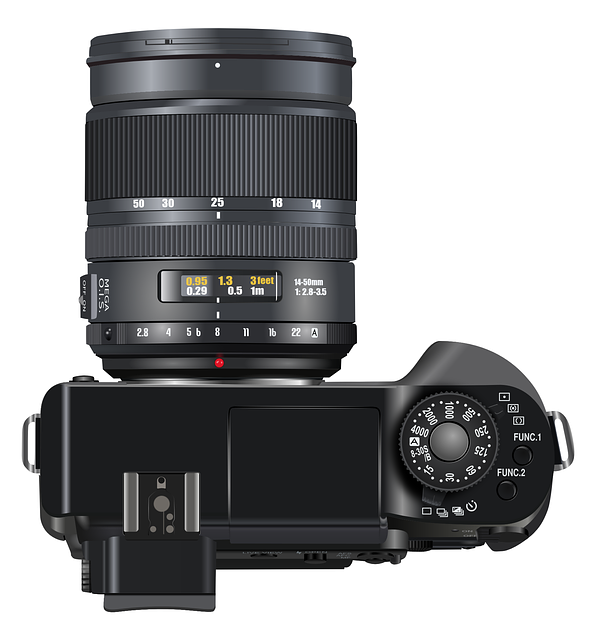IoT Applications in Agriculture: Smart Farming Practices


When it comes to revolutionizing the agricultural industry, IoT applications have taken center stage, bringing forth a new era of smart farming practices. By seamlessly integrating technology with agriculture, farmers can now optimize their operations, increase efficiency, and maximize yields like never before.
One of the key areas where IoT has made a significant impact is in crop monitoring and management. With the help of sensors and connected devices, farmers can gather real-time data on crucial parameters such as soil moisture levels, temperature, humidity, and even nutrient content. This valuable information enables them to make data-driven decisions regarding irrigation, fertilization, and pest control, ensuring that crops receive the ideal conditions for growth.
Furthermore, IoT enables precision agriculture by facilitating the use of drones and autonomous vehicles. These cutting-edge technologies equipped with sensors and cameras can survey vast farmlands efficiently, identifying areas of concern such as crop diseases, weed infestations, or nutrient deficiencies. By pinpointing such issues early on, farmers can take prompt action, preventing potential losses and optimizing crop health.

Another fascinating application of IoT in agriculture is livestock monitoring. Through wearable devices and tracking systems, farmers can monitor the health, behavior, and location of their livestock remotely. This data empowers them to detect signs of illness, track grazing patterns, and ensure timely vaccinations. By leveraging IoT, farmers can proactively address potential health risks and enhance overall animal welfare.
IoT also plays a vital role in optimizing resource management on farms. Connected devices can monitor energy consumption, water usage, and machinery performance, allowing farmers to identify areas of inefficiency and implement sustainable practices. By minimizing waste and optimizing resource allocation, IoT helps reduce operational costs and environmental impact.
IoT applications in agriculture have transformed traditional farming practices into smart and efficient systems. From crop monitoring and precision agriculture to livestock management and resource optimization, IoT offers a range of solutions that empower farmers to make informed decisions and maximize productivity. As we embrace the power of technology, the future of agriculture looks promising, ensuring sustainable food production to meet the ever-growing global demand.
Revolutionizing Agriculture: How IoT Applications Are Transforming Smart Farming Practices

Have you ever wondered how technology has infiltrated every aspect of our lives, even the fields where our food grows? The agricultural landscape is undergoing a remarkable transformation with the advent of Internet of Things (IoT) applications. In this article, we will explore how IoT is revolutionizing smart farming practices and paving the way for a more efficient and sustainable future.

Imagine a farm where every plant, animal, and environmental factor is interconnected through a network of sensors and devices. That’s the power of IoT in agriculture. By harnessing the capabilities of IoT, farmers can collect real-time data on soil moisture, temperature, humidity, and nutrient levels. This information enables them to make data-driven decisions and optimize their farming operations like never before.
One of the key advantages of IoT in smart farming is precision agriculture. Traditionally, farmers had to rely on guesswork and manual labor to determine the needs of their crops. IoT changes the game by providing accurate and granular insights into crop health and growth patterns. Farmers can now use this data to apply fertilizers, water, and pesticides precisely where and when they are needed, reducing waste and increasing yields.
IoT also plays a crucial role in livestock management. Sensors attached to animals can monitor their health, behavior, and location in real-time. Farmers receive alerts if there are any anomalies or signs of illness, allowing for early intervention. Moreover, IoT-enabled feeding systems can automatically dispense feed based on individual animal requirements, ensuring optimal nutrition and minimizing costs.
Another area where IoT is making waves is supply chain management. From field to fork, IoT applications enable seamless tracking and monitoring of produce. Temperature, humidity, and quality sensors ensure that perishable goods are stored and transported under ideal conditions. This not only reduces spoilage but also enhances food safety and traceability, giving consumers peace of mind.
The integration of IoT applications in agriculture is revolutionizing smart farming practices. By leveraging real-time data and automation, farmers can optimize resource utilization, increase productivity, and reduce environmental impact. The future of agriculture lies in the hands of IoT, leading us towards a more sustainable and interconnected food system.
From Fields to Bytes: Unleashing the Power of IoT in Agriculture for Efficient Farm Management
Introduction:
Imagine a future where farms are seamlessly connected, transforming traditional agriculture into a smart and efficient ecosystem. This extraordinary shift is being powered by the Internet of Things (IoT), revolutionizing the way we manage and cultivate crops. From monitoring soil conditions to optimizing resource usage, IoT technology is unlocking tremendous potential in agriculture. Let’s delve into the details of how IoT is reshaping farming practices and enabling efficient farm management.
Monitoring and Precision Agriculture:
With IoT sensors strategically placed across fields, farmers can gather real-time data on crucial variables like soil moisture levels, temperature, humidity, and nutrient composition. This invaluable information allows them to make informed decisions about irrigation schedules, fertilization techniques, and crop protection measures. By precisely tailoring their interventions based on accurate data, farmers can optimize resource utilization, reduce waste, and improve overall productivity.
Livestock Monitoring and Health Management:
IoT devices equipped with sensors are not limited to crop cultivation alone. They can also be employed to monitor livestock health and well-being. Smart collars and tags equipped with biometric sensors enable continuous monitoring of vital signs, such as heart rate, body temperature, and activity levels. This data helps farmers identify early signs of disease or distress, allowing for timely intervention and preventive measures. With IoT-enabled livestock management, farmers can ensure the welfare of their animals and maximize productivity.
Automated Machinery and Equipment:
IoT technology has paved the way for automation in agriculture, streamlining labor-intensive tasks and increasing operational efficiency. Connected machinery fitted with sensors and actuators can perform precise actions based on real-time data, reducing human error and optimizing performance. Automated systems can control irrigation, seeding, and harvesting processes, ensuring accuracy and minimizing resource wastage. By embracing IoT-powered automation, farmers can achieve higher yields and save valuable time and effort.
Data Analytics and Decision Making:
The vast amount of data generated by IoT devices in agriculture holds immense value. Through sophisticated analytics, farmers can gain actionable insights, enabling data-driven decision making. By analyzing historical patterns and current trends, they can forecast crop yields, predict pest outbreaks, and optimize supply chain logistics. This information empowers farmers to make informed choices that drive productivity and profitability while mitigating risks.
Conclusion:
The marriage of IoT and agriculture has birthed a new era of efficiency and sustainability. From monitoring field conditions to automating processes and harnessing the power of data analytics, the potential of IoT in agriculture is boundless. As farms evolve into connected ecosystems, we can unlock higher yields, reduce resource consumption, and ensure food security for a growing global population. Embracing IoT technology in agriculture will help us cultivate a greener future where fields and bytes converge to revolutionize farming as we know it.
Harnessing the Digital Revolution: Exploring IoT’s Impact on Agricultural Productivity and Sustainability
In today’s rapidly evolving world, technology has become an indispensable part of our lives. From smartphones to smart homes, innovations have transformed various aspects, and the agricultural industry is no exception. The digital revolution has paved the way for a remarkable transformation in agriculture, and one of its most significant contributions is the Internet of Things (IoT). In this article, we will delve into the details of how IoT is revolutionizing agricultural productivity and sustainability.
Imagine a world where farmers can monitor their crops with precision, collect real-time data, and make informed decisions. Well, that vision is now a reality, thanks to IoT. By integrating sensors, devices, and connectivity, IoT enables farmers to gather crucial information about soil moisture, temperature, humidity, and nutrient levels remotely. This invaluable data empowers them to optimize irrigation systems, apply fertilizers more efficiently, and detect potential diseases or pests early on. With constant monitoring and analysis, farmers can align their cultivation practices with the specific needs of their crops, boosting productivity while minimizing resource wastage.
But it doesn’t stop there. IoT goes beyond crop management and extends its benefits to livestock farming as well. Connected devices equipped with biometric sensors can track the health and well-being of animals, providing insights into their behavior, vital signs, and feeding patterns. By closely monitoring these indicators, farmers can promptly identify any signs of distress or illness, ensuring timely intervention and preventing the spread of diseases. Additionally, IoT-powered automated feeding systems can optimize the feeding process, delivering precise portions of feed tailored to individual animal requirements, leading to healthier livestock and increased profitability.
Furthermore, IoT plays a pivotal role in promoting sustainability within the agricultural sector. Through advanced analytics and predictive modeling, farmers can optimize the use of natural resources, such as water and energy, reducing waste and environmental impact. Automated irrigation systems can be intelligently controlled based on weather forecasts and soil conditions, ensuring that water is used efficiently, minimizing water scarcity concerns. Additionally, IoT enables precision agriculture techniques, enabling farmers to apply fertilizers and pesticides only where and when necessary, reducing chemical usage and ecological harm.
As we embrace the digital revolution, it becomes evident that IoT has immense potential to revolutionize agricultural practices. From enhancing productivity and efficiency to promoting sustainability, IoT empowers farmers with valuable insights and tools to make informed decisions. By harnessing the power of technology, we can pave the way for a more sustainable and productive future in agriculture, where the benefits extend not only to the farmers but also to the larger society.
The Future of Farming Is Here: IoT Innovations Empowering Farmers with Smart Agriculture Solutions
The future of farming is here, and it’s bringing a wave of technological advancements that are revolutionizing the agricultural industry. Thanks to IoT (Internet of Things) innovations, farmers now have access to smart agriculture solutions that are empowering them like never before. In this article, we will explore how these cutting-edge technologies are transforming traditional farming practices and paving the way for a more sustainable and efficient future.
Imagine a world where farmers can monitor their crops and livestock remotely, making informed decisions based on real-time data. With IoT, this vision becomes a reality. Through the use of sensors and connected devices, farmers can collect valuable information about soil moisture levels, temperature, humidity, and even the health of individual plants or animals. This data is then analyzed by advanced algorithms, providing actionable insights that help optimize farming operations.
One of the key benefits of IoT in agriculture is enhanced resource management. By accurately measuring soil moisture content, farmers can determine the exact amount of water needed for irrigation, avoiding wastage and ensuring optimal plant growth. Similarly, monitoring environmental conditions enables farmers to adjust temperature and humidity levels inside greenhouses, maximizing crop yields and minimizing energy consumption.
But IoT doesn’t stop at crop management. Livestock monitoring is another area where smart agriculture solutions are making a significant impact. Farmers can attach wearable devices to animals, tracking their location, activity levels, and overall health. This allows for early detection of diseases, ensuring timely intervention and preventive measures. Moreover, IoT-powered systems can automate feeding processes, precisely delivering the right amount of food to each animal, leading to healthier livestock and increased productivity.
The benefits of IoT in farming extend beyond individual farms. Connected networks enable farmers to share data and insights with each other, fostering collaboration and knowledge exchange. This collective intelligence helps identify trends, predict market demands, and implement best practices across the industry.

The future of farming is being shaped by IoT innovations, empowering farmers with smart agriculture solutions. With real-time data, remote monitoring, and automated processes, farmers can optimize resource management, increase productivity, and contribute to a more sustainable and efficient agricultural sector. The possibilities are endless, and as technology continues to evolve, so does the potential for a brighter future in farming.




